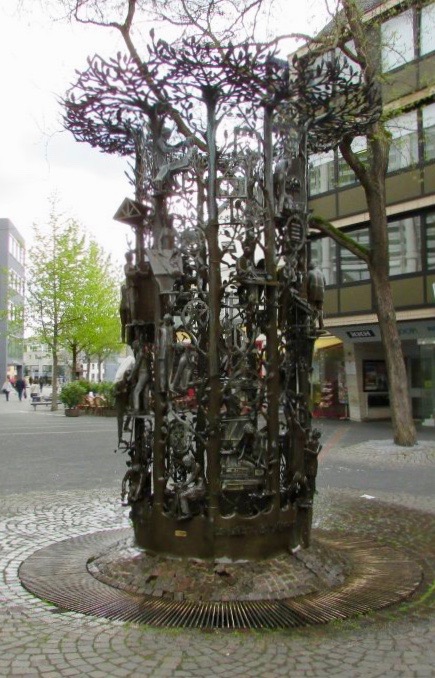This beautiful statue, which is also a fountain, stands in the heart of the ancient city of Trier in Germany. All the crafts that contributed to Trier’s prosperity are depicted in it, which is why this image gave me the idea to write a piece about crafts.
The crafts fountain is a structure like a ring of oak branches, executed in bronze. It is a gift of the Trier Craftsmen’s Union to the city, on the occasion of the city’s 2000th anniversary in 1984.
What strikes me is that in the Netherlands the appreciation for craft is slowly recovering. After years of neglecting vocational training, abolishing the LTS and trade schools and focusing on white-collar and “service sector” training, more and more people are apparently recognizing that there are still things that just have to be made. A good example is the great popularity of a TV program like Dutch Bake-off, which is one big ode to masterful patisserie.
Of course, I myself have practiced a craft all my life, and while studying first-grade teaching, my research was also about teaching a craft appropriately in the 21st century. I am therefore pleased to see the number of training and courses in all kinds of crafts growing slowly but surely. From welding courses, furniture-making workshops, laser cutting and 3D printing to knitting, bag-making and repair cafes.
But mastering a master-level craft, of course, requires more than taking a course or some workshops. The rule of thumb is that it takes 10,000 hours of practical experience to become a Master carpenter, blacksmith or professional musician, for example. Those are years. The slowness of the process also gives time for reflection, stimulating the imagination.
The hallmark of mastery is the convergence of creative creativity and perfect mastery of materials, tools and techniques.
You are a master if you can make anything you think of but also think of anything you want to make.

The crafts fountain in Trier. On the upper leftyou can see a
woman who has a skin worked, underneath a tailor
Who takes a customer’s measure.
Especially in the Alpine countries and surrounding regions, appreciation for the craft is still high. Between 100 and 150 crafts are still taught there according to the traditional master and apprentice proportions.
In Germany, the master-apprentice system has recently been reinstated; bearing the master title has a highly regarded social standing. In Germany, an apprentice, after his schooling or after being apprenticed to a master for two or three years, may independently expand his experience as a journeyman. For three years he traveles around as Wander Gesel , gaining work experience everywhere, even abroad. The honor and pride of the apprentice’s apprenticeship are reflected in being allowed to wear the associated traditional professional attire. After his apprentice period, he can take a master’s examination and obtain the master’s title.
Austria has a widespread practice learning system in education. According to PISA standards, the country does not exactly perform great with academic training, but it does have one of the lowest youth unemployment rates in Europe at 7.7% and an outstandingly educated workforce.
In this ever-growing re-evaluation of craft, I feel incredibly privileged and fortunate to be able to guide my Lfa students on their way toward craft mastery. And not only for short, educational courses, but also for substantial personal growth trajectories of several years.

